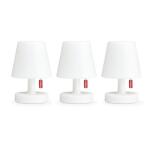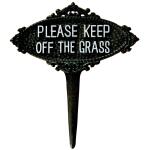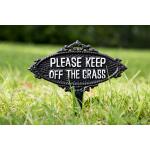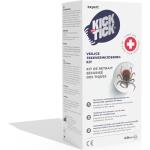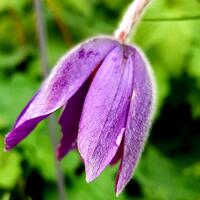 Nieuw
Nieuw 0
0Artikel gezocht
Tekst aangepast
Deze nieuw beschreven Dorstenia staat uitgebreid in C S S of Amerika en dit artikel zou ik graag hebben ! Is er iemand die geaboneerd is op die journal ?
Dit heb ik reeds over de nieuwe plant:
DORSTENIA
Dorstenia lavrani
[afbeelding verwijderd niet-https]
If this picture looks familiar, it is probable that you saw this stunning plant on one of our trips to Mike Massara’s greenhouse in Centerburg. At that time it had no name. This is no longer the case. Congratulations to Mike Massara and Tom McCoy on publishing this plant in the current issue of the Cactus and Succulent Journal. It was named after John J. Lavranos for his work in this area. This plant from Somalia has rearranged the Dorstenia species in that unlike the rest of the species, Dorstenia lavrani is the one to bear male and female flowers on separate plants. For additional details on this plant and other species of Dorstenia, check this older version of the plant of the month column written about 18 months ago Please refer to Cactus and Succulent Journal for a complete description and additional pictures.
OLDER VERSION:
Dorstenia sp Tabia Gorge, Somalia
by Bruce brethauer
During a recent joint field trip with the Midwest Cactus and Succulent Society, featuring a visit to the home and greenhouse of Mike and Maureen Massara who run Out of Africa, many visitors were captivated by a remarkably attractive Dorstenia originating from Somalia. The plant is believed to represent a new species, and is in Mike’s experience, the only species of Dorstenia which is dioecious - in which the male (pollinate) and female (pistillate) flowers, are bourn on separate plants. This arrangement assures that no seedlings are the result of self pollination, as two or more plants (of the proper gender) are required to set seed. This plant is, at present an unnamed species, awaiting a proper description , but in the meantime Mike identifies it as Dorstenia sp Tabia Gorge, Somalia
While Mike currently maintains three plants of this species to serve as his parent stock, the real star was the single female plant, a many stemmed plant which produced a symmetrical "grove" with many succulent wax-like stems which were patterned with spiraling rows of whitish leaf scars. Each stem was topped with a rosette of attractively crisped leaves. Overall, this plant had the appearance of a compact grove of palm trees, and is perhaps the most attractive of all of the Dorstenias which I have seen.
The Moraceae, or Fig Family (to which the Dorstenias belong) are generally known for their unusual fruits. The flowers of the fig are minute - if not microscopic, and occur in masses on a fleshy receptacle. In the edible fig, the "fruits" are comprised of this receptacle which also contains masses of embedded (and very small) fruits, each containing a seed. The receptacle of most figs are so curved in upon themselves, that pollinators can only enter the peduncle through a minute hole at the bottom, the peduncle actually enveloping a small chamber in which the pollinator (usually a species of minute wasp) can reach the female flowers. In contrast, the receptacle in the various species of Dorstenia, are open, often flat or only moderately curved, folded or cupped - it has the general appearance of a fleshy greenish daisy, with long, fleshy bracts radiating outwards from its center: it has a weird appearance which generally defies adequate description; I usually describe these "flowers" as daisies from Mars.
While the species which are most frequently encountered in succulent collections originate from eastern Africa and the Arabian peninsula, the various species of Dorstenia are more widely distributed, with species being recorded from much of tropical eastern Africa, Portions of the Arabian Peninsula (and Socotra), Madagascar, India, and South and Central America. According to my references, approximately 170 species have been identified, although there is now a trend to consolidate many taxon together under a more broad concept of the species, so I suspect that the number of recognized species has diminished somewhat.
All things considered, I am rather surprised that the Dorstenias are not more widely grown. For the most part they are easy plants to grow, tolerating a wide variety of growing conditions, and (in many species) tolerating somewhat lower light conditions than most succulents. The succulent species are generally smallish plants which produce an interesting caudex, attractively marked with white or paler green leaf scars, and topped with a short rosette of leaves which often produce nicely undulate margins. Many growers find Dorstenia "flowers" to be strangely attractive or odd to the point of being interesting, and grow these plants for these alone. These "flowers" are generally produced either continuously, or in several successive waves over much of the year - usually corresponding to the plants growing season, which differs from the flowering habits of most other succulents, which generally produce flowers during a comparatively short blooming season. More often than not, if a dorstenia is actively growing, chances are good that it will be producing "flowers" somewhere on the plant (D. gigas may be one exception to this rule). The small size of some species makes them suitable for windowsills, or growing under fluorescent lights. These plants do not produce spines (a real plus for those persons who may have pets and young children), however, many Dorstenias will produce a latex, which in some species, may be irritating or toxic. In Dorstenia foetida, true its name, this latex has a fetid odor.
The Dostenias have seen some "bad press" over the years; many species generally being regarded as "weedy". Their "flowers" are capable of producing many seed which, when ripe, are forcibly ejected from the receptacle, sending the seed flying many feet, so volunteers could often be found growing in the pots which were located some distance from the parent plants. Even so, I have never been plagued by masses of these seedlings, just an odd plant or two in some of my pots - so while many plants will readily propagate on their own, they seldom become truly weedy. Dorstenias also seem to have the reputation of being comparatively short lived, although I am not sure if this reputation is deserved. More often than not, the typical plant seen in cultivation is a small seedling consisting of a single stem, or a single main stem producing a few modest branches. In either event, the plant is perhaps 2 or 4 inches in height. While I have seldom seen very large plants in private collections, most of the more commonly grown species can eventually attain larger sizes, with some species growing to a foot or more in height, and eventually branching from the base to produce an attractive "grove" of stems. The giant of the genus, Dorstenia gigas, is known to produce huge stems which may measure from about 6 to 12 or more inches across at its base, and tapering to a point at their apex, at 4 to 6 feet. The main stem produces numerous smaller branches along it length, giving the plant roughly the appearance of a dwarf "Boojum Tree" (Idria columnaris, which is another one of nature’s great oddities). Dorstenia gigas has long been the "Holy Grail" of the Dorstenia collectors. They are endemic to Socotra, and have rarely been imported; and until recently, they seem to have resisted commercial propagation as well - either seldom producing viable seed, or rarely germinating or both. But in recent years, several growers regularly offer seedlings of this exceptional species: so at least a few growers have unlocked the secret of propagating this attractive species; and the price of seedlings of this plant have fallen dramatically as a result.
Dorstenias are generally easy plants to grow - provided that a few basic guidelines are followed: They like warmth, and will generally not thrive when continuously maintained at room temperatures and cooler conditions. They thrive under summer heat, during which time the plants should be moved outdoors, and watered regularly. Even the succulent species may grow in regions with an annual rainy season, and in many regions, seasonal rains may be quite heavy - between 15 to 40 inches (or more) in a season, so most species will benefit from frequent and heavy watering during their growing season (usually from spring through early fall). During particularly hot and dry summer weather, I may water as often as twice a week, but on average, I water my plants in summer about once a week (including regular rains). The potting soil should not be perpetually wet, it should be permitted to dry completely before the plant is watered again, but an actively growing plant should not be subjected to extended drought, otherwise, the plant will drop its leaves to conserve moisture, and will probably remain dormant for several weeks. Most species (with the exception of D. gigas which requires rather intense light) will probably grow best in areas which are partially shaded or under dapple shade, although many species will tolerate brighter light. When moving plants outside, it is best to gradually acclimatize them to the increased light levels by first placing the plants in full shade for a few days, and gradually moving the plants to areas which receive somewhat brighter light until they are in their final location for the season; this process should take about a week or two. It is my belief that when Dorstenias are growing (producing leaves and flowers) they will require a bit more fertilization than most other succulents. I use a low nitrogen liquid fertilizer (I prefer Dyna - Gro Bloom) which I mix with water and use to periodically water my plants. I mix this at about 1/4 the recommended strength, and fertilize about once every 2 weeks (during the same season, I usually fertilize my other succulents about once every 3 weeks).
Always look to your plants for evidence that they are becoming dormant. A plant entering into dormancy will stop producing flowers, and will begin to shed many of its leaves. If plants are becoming dormant during their normal growing season, this may be a sign of problems - usually it is a sign to modify the frequency of watering: if plants are too dry, water more frequently. Leaf drop during the growing season may also be a sign that the roots have begun to rot (often as a result of over -watering). While this is rare in plants which are given warm growing conditions and a good porous potting medium, it can occasionally occur. Un-pot the plant to inspect its roots - if the roots look healthy, repot the plant, but allow the medium to become dry and keep it dry for a week or so: if the roots are rotting or absent, repot the plant with new (dry) potting medium, place the pot in a more shaded area and keep it dry for one or two weeks - if the plant recovers somewhat, give it a light watering, and monitor its progress; if it shows signs of recovery, gradually increase the frequency of watering but do not over-water. If no improvement is detected, keep the plant dry, or keep the soil barely moist until the plant produces new roots (the plant may remain dormant until the next year). If problems are detected early, the plants will usually recover quickly.
As the season cools, leaf drop is usually a sign that the plant is entering into its natural period of dormancy, and is not generally cause for concern. Dormant plants can be maintained at cooler temperatures (room temperature) and should be watered less frequently (a relatively light watering once every 3 weeks or so). Dormant plants should not be fertilized, they will benefit from bright but filtered light (or grown under fluorescent lights positioned just a few inches above the plant). Dormancy usually lasts through the winter. Later in the season, be on the lookout for the beginnings of new growth - usually the production of new leaves or "flowers"; once plants begin to produce new growth, it is time to water them a bit more frequently, and (if possible) to provide increased light and increased temperatures.
The Dorstenias are, in my opinion, one of the oddballs of the greater Fig Family, their odd inflorescence and (in the succulent species) squat caudiciform growth make these interesting plants. Their small size and relative ease of culture should endear these plants to many growers with very limited space. But as people are able to grow truly magnificent specimen plants, such as the female plant of Dorstenia sp Tabia Gorge, Somalia or Dorstenia gigas seen at the Out of Africa greenhouse, I imagine that more of the succulent afficionados will rediscover some of the species of this interesting genus.
Het blad met de onderstaande cover zoek ik dus ( het artikel erin )
[afbeelding verwijderd niet-https]
On the cover.Some plants have it all-great form, interesting flowers, ease of culture, splashy color, and seasonal variation. Such are the few cultivated succulent dorstenias, which are perenially popular and fascinating pachycaul succulents with a bizzare flowering structure, normally bearing both male and female flowers. Often self fertile, a few are eager to volunteer as seedlings without any help at all. Not so with our cover feature, a Somalian plant long circulating under only its locality as Dorstenia sp Taba'a Gorge. It turns out to be unique in the genus for having male and female flowers on separate plants, a feature that delayed its introduction for many years after its discovery and now distinguishes it as a valid new species.
It's easy to see why, even unnamed, this plant attracts attention. Our cover, a photo by Out of Africa's Mike Massara, reveals leaves of this "new" dorstenia in fall color, just before they drop for a winter rest. And in this issue it finally receives a name: Dorstenia lavrani.
Dit heb ik reeds over de nieuwe plant:
DORSTENIA
Dorstenia lavrani
[afbeelding verwijderd niet-https]
If this picture looks familiar, it is probable that you saw this stunning plant on one of our trips to Mike Massara’s greenhouse in Centerburg. At that time it had no name. This is no longer the case. Congratulations to Mike Massara and Tom McCoy on publishing this plant in the current issue of the Cactus and Succulent Journal. It was named after John J. Lavranos for his work in this area. This plant from Somalia has rearranged the Dorstenia species in that unlike the rest of the species, Dorstenia lavrani is the one to bear male and female flowers on separate plants. For additional details on this plant and other species of Dorstenia, check this older version of the plant of the month column written about 18 months ago Please refer to Cactus and Succulent Journal for a complete description and additional pictures.
OLDER VERSION:
Dorstenia sp Tabia Gorge, Somalia
by Bruce brethauer
During a recent joint field trip with the Midwest Cactus and Succulent Society, featuring a visit to the home and greenhouse of Mike and Maureen Massara who run Out of Africa, many visitors were captivated by a remarkably attractive Dorstenia originating from Somalia. The plant is believed to represent a new species, and is in Mike’s experience, the only species of Dorstenia which is dioecious - in which the male (pollinate) and female (pistillate) flowers, are bourn on separate plants. This arrangement assures that no seedlings are the result of self pollination, as two or more plants (of the proper gender) are required to set seed. This plant is, at present an unnamed species, awaiting a proper description , but in the meantime Mike identifies it as Dorstenia sp Tabia Gorge, Somalia
While Mike currently maintains three plants of this species to serve as his parent stock, the real star was the single female plant, a many stemmed plant which produced a symmetrical "grove" with many succulent wax-like stems which were patterned with spiraling rows of whitish leaf scars. Each stem was topped with a rosette of attractively crisped leaves. Overall, this plant had the appearance of a compact grove of palm trees, and is perhaps the most attractive of all of the Dorstenias which I have seen.
The Moraceae, or Fig Family (to which the Dorstenias belong) are generally known for their unusual fruits. The flowers of the fig are minute - if not microscopic, and occur in masses on a fleshy receptacle. In the edible fig, the "fruits" are comprised of this receptacle which also contains masses of embedded (and very small) fruits, each containing a seed. The receptacle of most figs are so curved in upon themselves, that pollinators can only enter the peduncle through a minute hole at the bottom, the peduncle actually enveloping a small chamber in which the pollinator (usually a species of minute wasp) can reach the female flowers. In contrast, the receptacle in the various species of Dorstenia, are open, often flat or only moderately curved, folded or cupped - it has the general appearance of a fleshy greenish daisy, with long, fleshy bracts radiating outwards from its center: it has a weird appearance which generally defies adequate description; I usually describe these "flowers" as daisies from Mars.
While the species which are most frequently encountered in succulent collections originate from eastern Africa and the Arabian peninsula, the various species of Dorstenia are more widely distributed, with species being recorded from much of tropical eastern Africa, Portions of the Arabian Peninsula (and Socotra), Madagascar, India, and South and Central America. According to my references, approximately 170 species have been identified, although there is now a trend to consolidate many taxon together under a more broad concept of the species, so I suspect that the number of recognized species has diminished somewhat.
All things considered, I am rather surprised that the Dorstenias are not more widely grown. For the most part they are easy plants to grow, tolerating a wide variety of growing conditions, and (in many species) tolerating somewhat lower light conditions than most succulents. The succulent species are generally smallish plants which produce an interesting caudex, attractively marked with white or paler green leaf scars, and topped with a short rosette of leaves which often produce nicely undulate margins. Many growers find Dorstenia "flowers" to be strangely attractive or odd to the point of being interesting, and grow these plants for these alone. These "flowers" are generally produced either continuously, or in several successive waves over much of the year - usually corresponding to the plants growing season, which differs from the flowering habits of most other succulents, which generally produce flowers during a comparatively short blooming season. More often than not, if a dorstenia is actively growing, chances are good that it will be producing "flowers" somewhere on the plant (D. gigas may be one exception to this rule). The small size of some species makes them suitable for windowsills, or growing under fluorescent lights. These plants do not produce spines (a real plus for those persons who may have pets and young children), however, many Dorstenias will produce a latex, which in some species, may be irritating or toxic. In Dorstenia foetida, true its name, this latex has a fetid odor.
The Dostenias have seen some "bad press" over the years; many species generally being regarded as "weedy". Their "flowers" are capable of producing many seed which, when ripe, are forcibly ejected from the receptacle, sending the seed flying many feet, so volunteers could often be found growing in the pots which were located some distance from the parent plants. Even so, I have never been plagued by masses of these seedlings, just an odd plant or two in some of my pots - so while many plants will readily propagate on their own, they seldom become truly weedy. Dorstenias also seem to have the reputation of being comparatively short lived, although I am not sure if this reputation is deserved. More often than not, the typical plant seen in cultivation is a small seedling consisting of a single stem, or a single main stem producing a few modest branches. In either event, the plant is perhaps 2 or 4 inches in height. While I have seldom seen very large plants in private collections, most of the more commonly grown species can eventually attain larger sizes, with some species growing to a foot or more in height, and eventually branching from the base to produce an attractive "grove" of stems. The giant of the genus, Dorstenia gigas, is known to produce huge stems which may measure from about 6 to 12 or more inches across at its base, and tapering to a point at their apex, at 4 to 6 feet. The main stem produces numerous smaller branches along it length, giving the plant roughly the appearance of a dwarf "Boojum Tree" (Idria columnaris, which is another one of nature’s great oddities). Dorstenia gigas has long been the "Holy Grail" of the Dorstenia collectors. They are endemic to Socotra, and have rarely been imported; and until recently, they seem to have resisted commercial propagation as well - either seldom producing viable seed, or rarely germinating or both. But in recent years, several growers regularly offer seedlings of this exceptional species: so at least a few growers have unlocked the secret of propagating this attractive species; and the price of seedlings of this plant have fallen dramatically as a result.
Dorstenias are generally easy plants to grow - provided that a few basic guidelines are followed: They like warmth, and will generally not thrive when continuously maintained at room temperatures and cooler conditions. They thrive under summer heat, during which time the plants should be moved outdoors, and watered regularly. Even the succulent species may grow in regions with an annual rainy season, and in many regions, seasonal rains may be quite heavy - between 15 to 40 inches (or more) in a season, so most species will benefit from frequent and heavy watering during their growing season (usually from spring through early fall). During particularly hot and dry summer weather, I may water as often as twice a week, but on average, I water my plants in summer about once a week (including regular rains). The potting soil should not be perpetually wet, it should be permitted to dry completely before the plant is watered again, but an actively growing plant should not be subjected to extended drought, otherwise, the plant will drop its leaves to conserve moisture, and will probably remain dormant for several weeks. Most species (with the exception of D. gigas which requires rather intense light) will probably grow best in areas which are partially shaded or under dapple shade, although many species will tolerate brighter light. When moving plants outside, it is best to gradually acclimatize them to the increased light levels by first placing the plants in full shade for a few days, and gradually moving the plants to areas which receive somewhat brighter light until they are in their final location for the season; this process should take about a week or two. It is my belief that when Dorstenias are growing (producing leaves and flowers) they will require a bit more fertilization than most other succulents. I use a low nitrogen liquid fertilizer (I prefer Dyna - Gro Bloom) which I mix with water and use to periodically water my plants. I mix this at about 1/4 the recommended strength, and fertilize about once every 2 weeks (during the same season, I usually fertilize my other succulents about once every 3 weeks).
Always look to your plants for evidence that they are becoming dormant. A plant entering into dormancy will stop producing flowers, and will begin to shed many of its leaves. If plants are becoming dormant during their normal growing season, this may be a sign of problems - usually it is a sign to modify the frequency of watering: if plants are too dry, water more frequently. Leaf drop during the growing season may also be a sign that the roots have begun to rot (often as a result of over -watering). While this is rare in plants which are given warm growing conditions and a good porous potting medium, it can occasionally occur. Un-pot the plant to inspect its roots - if the roots look healthy, repot the plant, but allow the medium to become dry and keep it dry for a week or so: if the roots are rotting or absent, repot the plant with new (dry) potting medium, place the pot in a more shaded area and keep it dry for one or two weeks - if the plant recovers somewhat, give it a light watering, and monitor its progress; if it shows signs of recovery, gradually increase the frequency of watering but do not over-water. If no improvement is detected, keep the plant dry, or keep the soil barely moist until the plant produces new roots (the plant may remain dormant until the next year). If problems are detected early, the plants will usually recover quickly.
As the season cools, leaf drop is usually a sign that the plant is entering into its natural period of dormancy, and is not generally cause for concern. Dormant plants can be maintained at cooler temperatures (room temperature) and should be watered less frequently (a relatively light watering once every 3 weeks or so). Dormant plants should not be fertilized, they will benefit from bright but filtered light (or grown under fluorescent lights positioned just a few inches above the plant). Dormancy usually lasts through the winter. Later in the season, be on the lookout for the beginnings of new growth - usually the production of new leaves or "flowers"; once plants begin to produce new growth, it is time to water them a bit more frequently, and (if possible) to provide increased light and increased temperatures.
The Dorstenias are, in my opinion, one of the oddballs of the greater Fig Family, their odd inflorescence and (in the succulent species) squat caudiciform growth make these interesting plants. Their small size and relative ease of culture should endear these plants to many growers with very limited space. But as people are able to grow truly magnificent specimen plants, such as the female plant of Dorstenia sp Tabia Gorge, Somalia or Dorstenia gigas seen at the Out of Africa greenhouse, I imagine that more of the succulent afficionados will rediscover some of the species of this interesting genus.
Het blad met de onderstaande cover zoek ik dus ( het artikel erin )
[afbeelding verwijderd niet-https]
On the cover.Some plants have it all-great form, interesting flowers, ease of culture, splashy color, and seasonal variation. Such are the few cultivated succulent dorstenias, which are perenially popular and fascinating pachycaul succulents with a bizzare flowering structure, normally bearing both male and female flowers. Often self fertile, a few are eager to volunteer as seedlings without any help at all. Not so with our cover feature, a Somalian plant long circulating under only its locality as Dorstenia sp Taba'a Gorge. It turns out to be unique in the genus for having male and female flowers on separate plants, a feature that delayed its introduction for many years after its discovery and now distinguishes it as a valid new species.
It's easy to see why, even unnamed, this plant attracts attention. Our cover, a photo by Out of Africa's Mike Massara, reveals leaves of this "new" dorstenia in fall color, just before they drop for a winter rest. And in this issue it finally receives a name: Dorstenia lavrani.
donderdag 1 mei 2008 - 22:24
vrijdag 2 mei 2008 - 22:06
O, er zijn al zaailingen van hoor maar jammer genoeg niet bij mij en voor zover ik weet niet in Belgie !
vrijdag 2 mei 2008 - 22:08
Voeg een reactie toe
Log in of registreer om dit onderdeel te gebruiken
 Laatste artikels
Laatste artikels Tuinieren
Tuinieren Planten
Planten Dieren
Dieren Vijver & zwembad
Vijver & zwembad De moestuin
De moestuin Bloemschikken
Bloemschikken De tuinkas
De tuinkas Klimaatopwarming
Klimaatopwarming Tuinproblemen
Tuinproblemen Tuinbabbel
Tuinbabbel Forum
Forum




 Promo's
Promo's Lentetips
Lentetips Zaden en bloembollen
Zaden en bloembollen Planten opkweken
Planten opkweken Aanleg en inrichting
Aanleg en inrichting Tuinapotheek
Tuinapotheek Decoratie en sfeer
Decoratie en sfeer In en om het huis
In en om het huis Kas en tuinhuis
Kas en tuinhuis Planten kopen
Planten kopen Laatste artikels
Laatste artikels Tuinieren
Tuinieren Planten
Planten Dieren
Dieren Vijver & zwembad
Vijver & zwembad De moestuin
De moestuin Bloemschikken
Bloemschikken De tuinkas
De tuinkas Klimaatopwarming
Klimaatopwarming Tuinproblemen
Tuinproblemen


